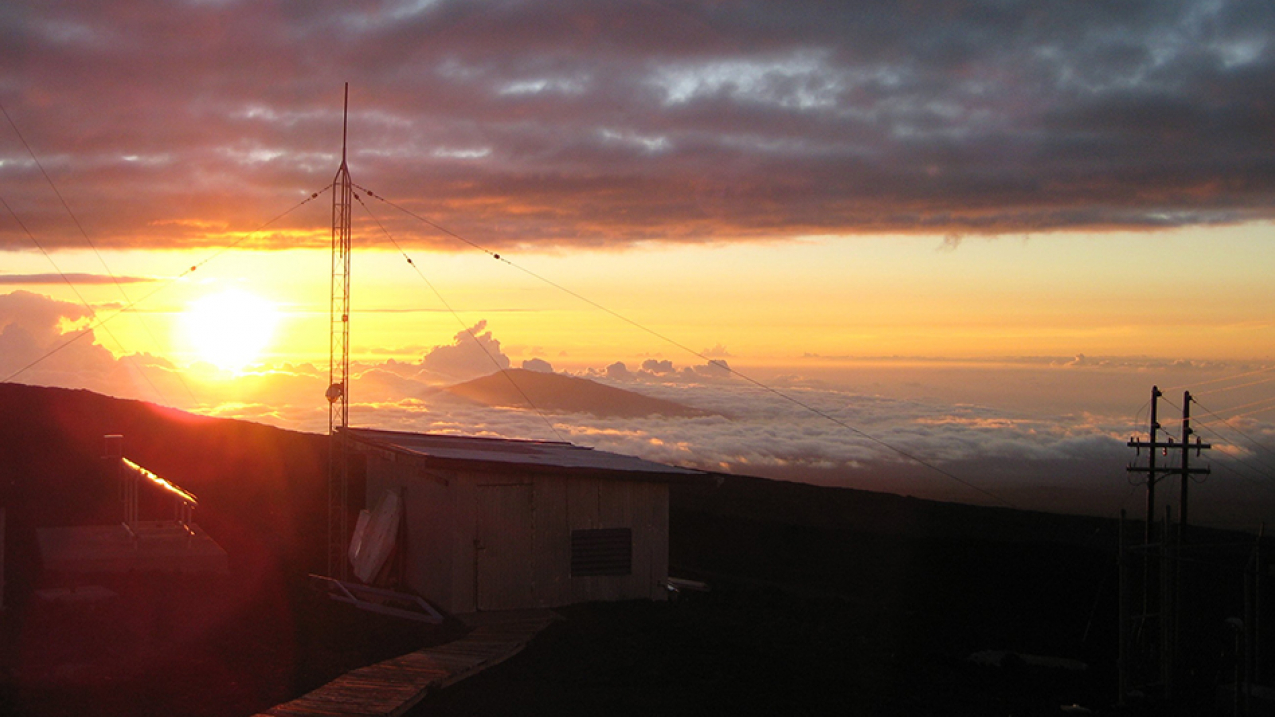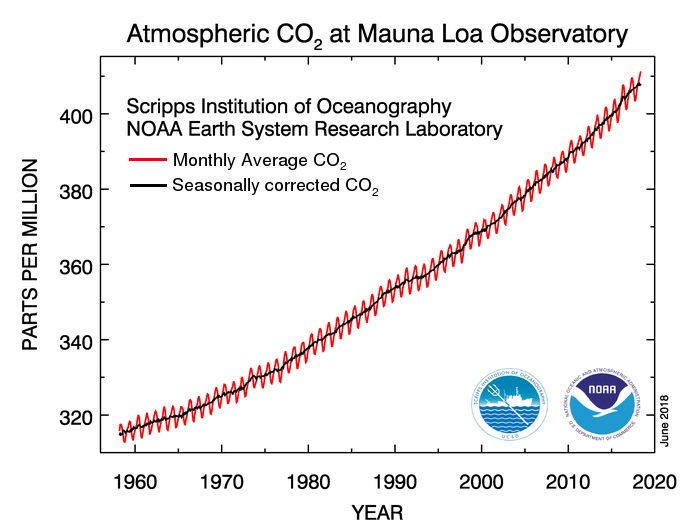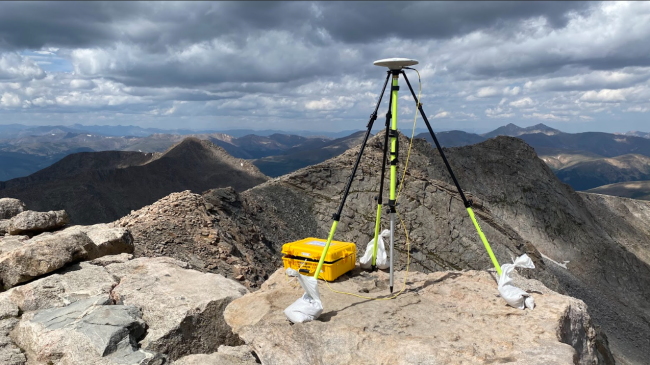Monthly average surpasses 410 parts per million for April and May
Carbon dioxide levels averaged more than 410 parts per million in April and May at NOAA’s Mauna Loa Atmospheric Baseline Observatory, surging past yet another climate milestone. This is the sixth consecutive year of steep global increases in concentrations of the greenhouse gas, scientists from NOAA and Scripps Institution of Oceanography announced today.

Sunset at NOAA's Mauna Loa Atmospheric Baseline Observatory (Image credit: NOAA)
Carbon dioxide levels are tracked closely by the world’s scientists as a measure of how human activity is changing the planet’s atmosphere. The concentration of CO2 in the atmosphere increases every year, and the rate of increase is accelerating. While it averaged about 1.6 ppm per year in the 1980s and 1.5 ppm per year in the 1990s, the growth rate increased to 2.2 ppm per year during the last decade.
"CO2 levels are continuing to grow at an all-time record rate because burning of coal, oil, and natural gas have also been at record high levels,” said Pieter Tans, lead scientist of NOAA's Global Greenhouse Gas Reference Network. "Today's emissions will still be trapping heat in the atmosphere thousands of years from now."
Independent measurements of CO2 at Mauna Loa are made by scientists with NOAA’s Earth System Research Laboratory and Scripps Institution of Oceanography at UC San Diego offsite link. Air samples are also shipped to NOAA’s Earth System Research Laboratory in Boulder, Colorado for verification, as well as further analysis.

The greenhouse effect explained
Carbon dioxide is one of several gases that are primarily responsible for trapping heat in the atmosphere. This “greenhouse effect” maintains temperatures suitable for life on Earth. During the past 150 years, large emissions of CO2 from human activity have trapped additional heat in the atmosphere and the oceans, making it the main contributor to rising global average temperatures.
Atmospheric CO2 averaged about 280 ppm between about 10,000 years ago and the start of the Industrial Revolution around 1750. In March 2018, the latest month for which global samples had been analyzed, the global average had climbed to 408.75 ppm.
Visit NOAA's Earth System Research Laboratory to learn more about trends in atmospheric carbon dioxide.
Media contact
Theo Stein, 303-497-6288


